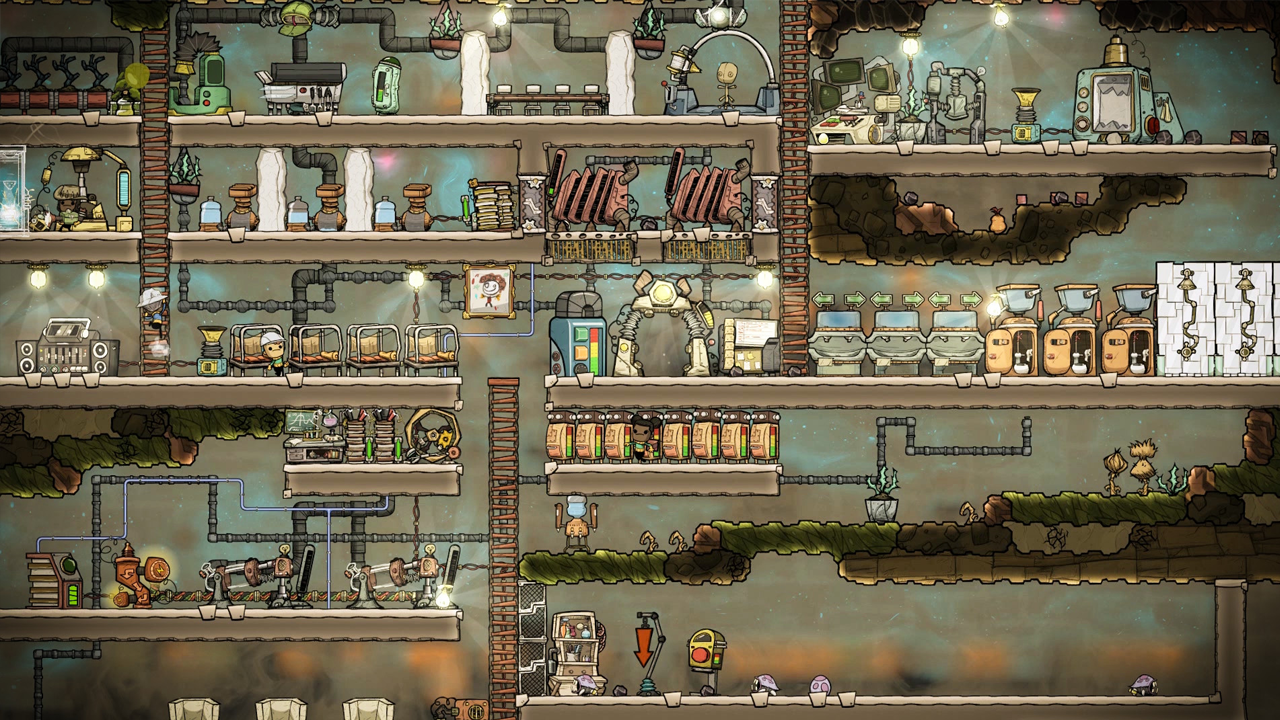“Can I run Unity game engine?” Well lets see, read on to find the Unity system requirements.
The Unity Game Engine, despite being in hot water recently due to their ongoing Unity “runtime fee” drama, is still one of the most used game development engines for games of all shapes and sizes. Since Unity acquired Weta Digital (the visual tools development division of Peter Jackson’s famous Weta FX visual effects company, Unity has also become a powerhouse within the film and television industry. There is no barrier to what you can do in Unity, whether it’s high-end photo-realistic special effects for the next big blockbuster, or a small indie game intended for release on phones and tablets, Unity makes it all possible.
But this “we can do it all” approach from Unity might be hard to nail down the system requirements for Unity, and by extension, what kind of rig your users need to be able to run your game. Because let’s be honest, building the next ‘Flappy Bird’ is hardly going to require as many performance resources as developing ‘Escape from Tarkov likely does.
Unity system requirements:
Keep in mind that these Unity system requirements are just what is directly provided by Unity themselves, and they’re pretty bare-bones. They don’t go into specifics for exactly what hardware these requirements…well…require. Not to worry though, I’ll cover that below.
Minimum system requirements for Windows:
- Operating System: Windows 7 (SP1+), Windows 10, or Windows 11, 64-bit versions only.
- Processor: Any X64 architecture CPU with SSE2 instruction set support.
- Graphics: Any GPU capable of DX10, DX11 or DX12.
- Additional requirements: All hardware vendors officially supported drivers.
Minimum system requirements for Mac:
- Operating System: Mojave 10.14+ (Intel editor), Big Sur 11.0 (Apple silicon editor)
- Processor: Any X64 architecture CPU with SSE2 instruction set support, Apple M1 or above (Apple silicon-based processors).
- Graphics: Metal-capable Intel and AMD GPUs.
- Additional requirements: Apple officially supported drivers (Intel Processor) Rosetta 2 is required for Apple silicon devices running on either Apple silicon or Intel versions of the Unity Editor.
Minimum system requirements for Linux:
- Operating System: Ubuntu 20.04 and Ubuntu 18.04.
- Processor: Any X64 architecture CPU with SSE2 instruction set support.
- Graphics: OpenGL 3.2 or Vulcan-capable Nvidia and AMD GPUs.
- Additional requirements: Gnome desktop environment running on top of X11 windows. Nvidia official proprietary graphics driver or AMD Mesa graphics driver. Other configuration and user environments as provided stock with the supported distribution (Kernel, Compositor, etc.)
So what this actually means in terms of hardware obviously varies depending on the game you’re making, so I’m going to break this up into minimum and recommended (by my own estimation). The minimum Unity 3D system requirements will be based on developing a demanding 2D game similar to something like Oxygen Not Included (demanding due to its multitude of systems and simulations, not the art). And recommended system requirements will be based on developing a higher-end graphically intensive game similar to something like Escape From Tarkov, by far the most well-known “photo-realistic” game made in Unity. Obviously, if you develop smaller 2D games on a machine with specs closer to or above the recommended you’ll have an even better experience.
As Unity points out in its own requirements, the Unity Editor has full support on Windows, Apple, and Ubuntu so I won’t go over those.
Minimum system hardware-specific requirements:
- Processor: Quad-Core Intel or AMD, 2.4GHz and above core speeds.
- Graphics Card: Nvidia GTX 1660 or AMD Radeon 5500 XT
- Memory: 8GB of DDR4 RAM
For a CPU you can technically get away with Dual-Core CPUs that you might find in budget laptops, but I would still recommend a Quad-Core at 2.4GHz or above, either an Intel i3 or AMD Ryzen 3, there’s really no reason to go lower, these are cheap and vastly outperform Dual Core CPUs. Will help immeasurably with compile times, renders, and play-testing in the Unity Editor.
Theoretically, you can run Unity on a Nvidia RTX 1050 or even older pre-1000 series GPU, the AMD equivalent being something like the AMD RX 560. These have 2 and 4GB video memory respectively, which is really what you care about when it comes to the Unity Editor. With that in mind, more and more features in Unity are GPU bound, things like shaders and VFX in particular, so a better GPU with more video memory is better. I’d actually recommend going for a GPU with 4-6GB of video memory, something like the Nvidia GTX 1660 or AMD Radeon 5500 XT.
For memory 8GB of DDR4 memory is generally going to be fine for most Unity tasks, again if you want to work with a lot of texture or video files a bit more would be beneficial, but it’s far from obligatory.

Recommended hardware-specific system requirements:
- Processor: 6 Core Intel or AMD, 4.0GHz and above core speeds.
- Graphics Card: Nvidia RTX 3060 or AMD Radeon RX 6600
- Memory: 16GB of DDR4 RAM
Get at least a newer generation Intel i5 or AMD Ryzen 5, especially if you’re doing advanced or high-speed physics calculations in your game or working with large databases. If you’re a lighting or VFX artist (who needs real-time particle collisions) I would also recommend considering upgrading to an i7/Ryzen 7 or even an i9/Ryzen 9 the latter especially if you’re going to be doing a lot of light map baking in large scenes as it could be the difference between 2 days and 2 hours in bake times.
For your GPU something like an RTX 3060 or the Radeon RX 6600 should do the trick for most development, but again this assumes you’re not working on advanced VFX, lightmaps, or super-high resolution textures. In this case, the sky is the limit you’ll see steady improvement in bake times and frames as you go up in price for your GPU. It’s not uncommon for these types of workflows to use RTX 80 or even 90-tier cards as much as it might be overkill for some.
I recommend at least 16GB of DDR4, it’s not that you’re going to need that much more than 8GB for most tasks in Unity, even higher-end tasks tend to soak up video memory more than traditional memory, but given background processes, windows, and the like, it will be pretty nice to have that extra RAM to spare.

And that’s it, if the recent drama has caused you to reconsider Unity as your choice of engine, you can always check out the Unreal Engine 5 system requirements guide Viorel wrote earlier this year as it’s still very much relevant.



